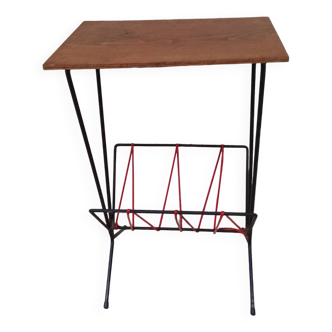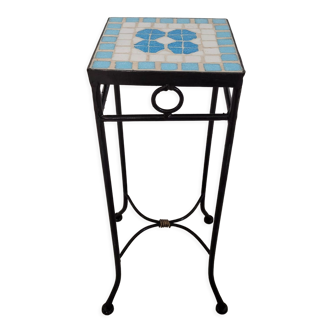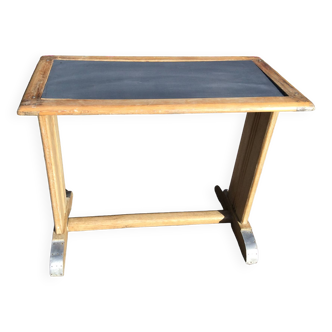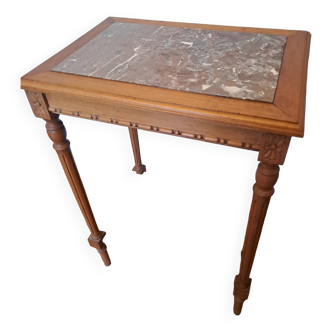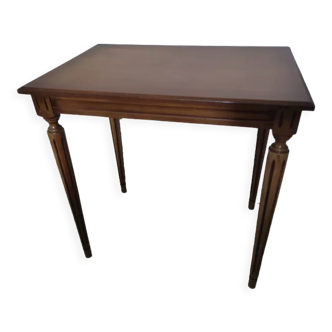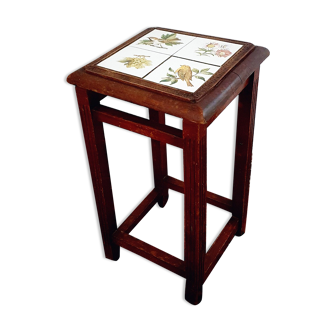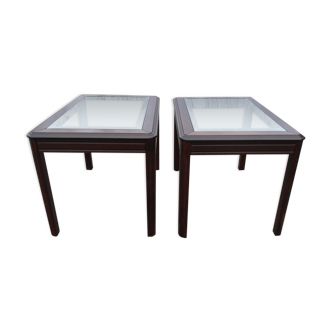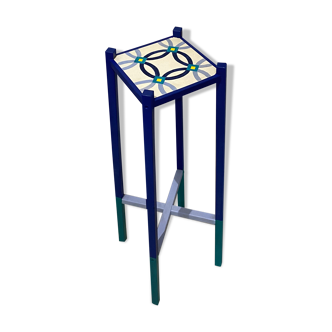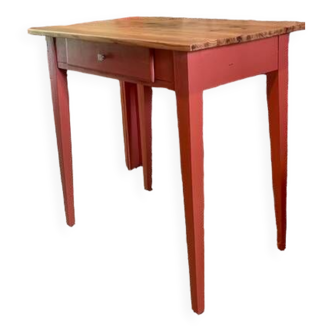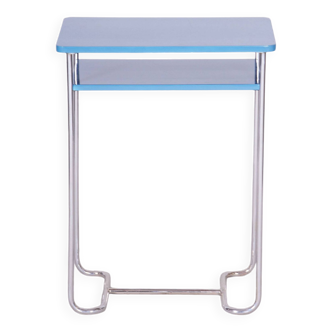Small cabinet in painted beech by Paul Follot circa 1920
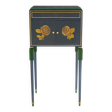
- Dimensions :
- H90 x W45 x D32
- Color :
- multicolour
- Material :
- wood
- Style :
- art deco
This bonheur du jour in blue and green lacquered wood with gold highlights made in the early 1920s by paul follot is a beautiful testimony to the elegance and delicacy advocated by paul follot. This beech cabinet rests on four tapered legs carved into cut sides sculpted with a green lacquered passementerie motif. The two doors are decorated with large stylized roses, painted and gilded, which contrast subtly with the deep blue. The upper shelf is decorated with a grid of small gold dots and highlighted with a sculpted twisted motif. Paul follot's creations stand out for this subtle balance between tradition and modernity, combining stylized motifs in the spirit of art nouveau and simple, more modern geometric shapes that characterize art deco. A major restoration, with a complete reworking of the french polish, has revived the colors and brought back contrast to this superb creation. Literature: léopold diego sanchez, paul follot: a parisian decorative artist, aam editions, 2020, color variant on cover; a. Novi, modern interiors, éditions d'art charles moreau, paris, plate 18; guillaume janneau, our investigation into modern furniture, paul follot, art et décoration, 1921, volume 2, page 143 and page 144. Paul follot (1877-1941) was a french artist and decorator, recognized for his work in the art nouveau style, then his evolution towards art deco. Coming from a family of artisans, he showed a marked interest in art and design from a young age. A student at the école des beaux-arts in paris, he was influenced by émile gallé and hector guimard, and began his career as a student of eugène grasse, another indisputable figure of the art nouveau movement. He designed sculptural furniture and decorative objects, often decorated with floral motifs and shapes inspired by the natural world. Over time, the artist turned to the art deco style, and would become an early protagonist.




























